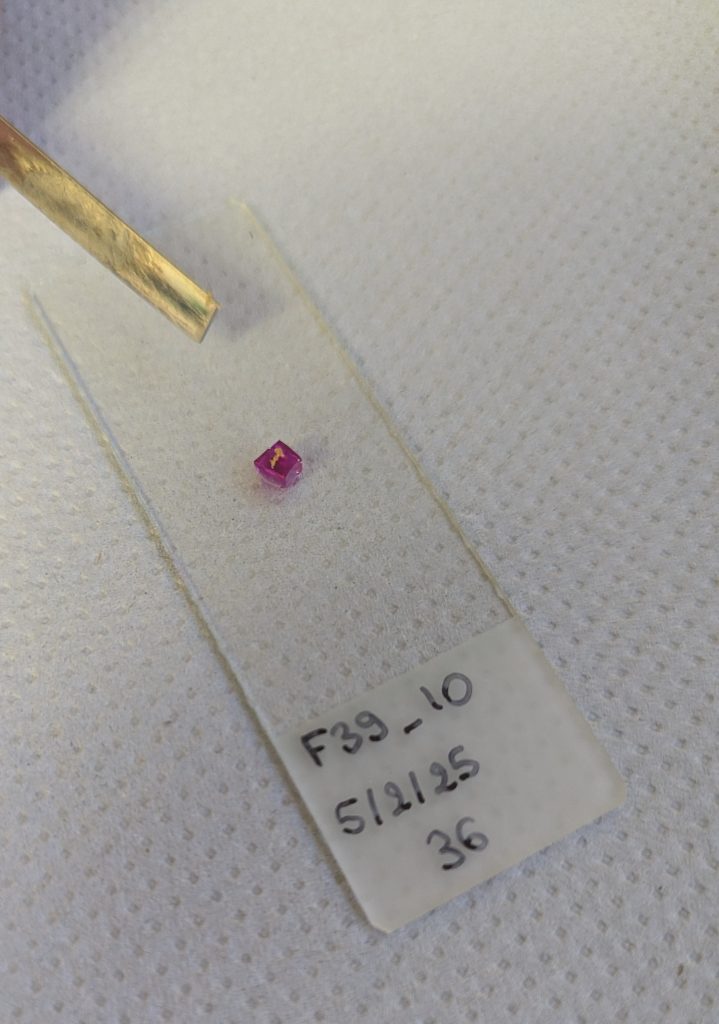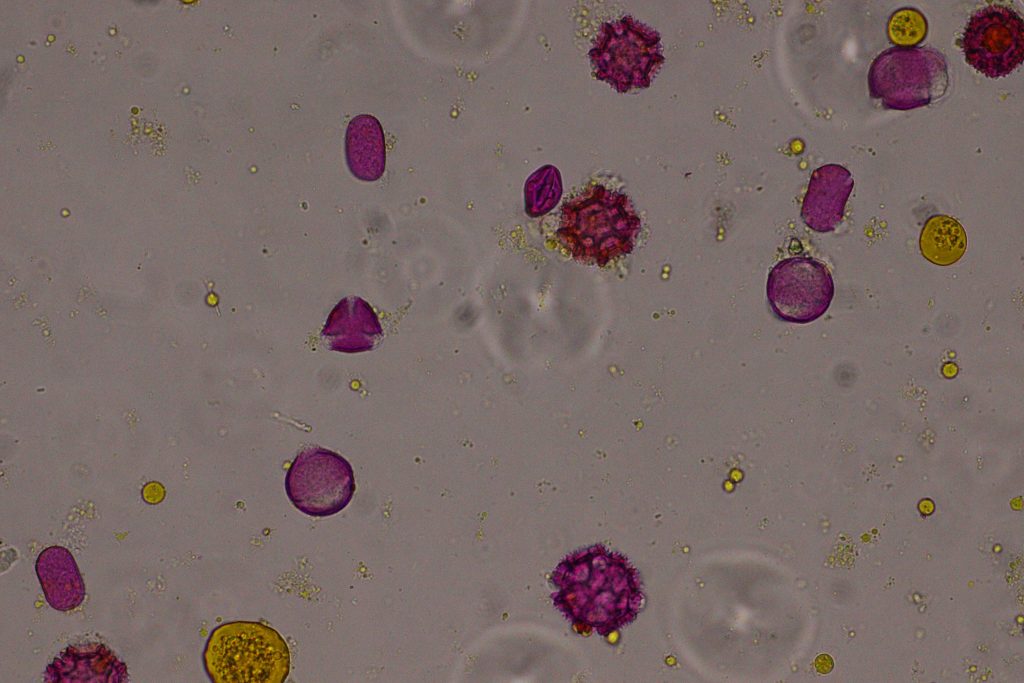It was time for pollen samples collected during the summer 2024 to be analysed! Our aim is to identify which pollen species the bees collected to make the pollen loads for their larvae. For this, all you need is some pink glycerine jelly, a microscope… and a lot of patience! Let’s break down the process.
First, a small amount of pollen is placed on a cube of glycerin jelly (Picture 1), which is then melted (Picture 2) and covered by a coverslip (Picture 3). The glycerin jelly contains fuschin, a pink dye that colours the outer layer of pollen grains and make their morphological features more visible under a microscope. This step is essential because specific morphological features (e.g., shape, spikes, holes…) are used to identify pollen species.



Pollen slides are then observed under a light microscope (x400 magnification) where pollen grains appear bright pink! The picture below shows pollen grains with different sizes, shapes and ornamentation found on the same slide. The pollen grains are classified into morphotypes based on their features.

On each slide, for each identified morphotype, pollen grains are then systematically counted along transects, which can be a bit tedious and requires a lot of concentration!
This work (preparing the slides, identifying pollen morphotypes and counting) was conducted by Evelyn Owen and Milissa Slipec-Daly, two UoH students, over the summer. Milissa will then be joined by Lewis Johns, another UoH student, in September and both will work on this project until May 2026. Thank you to everyone involved for their hard work!
